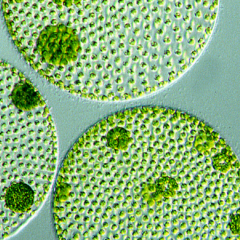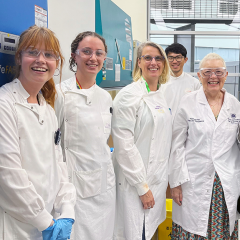The researchers’ findings, published in November, significantly extend conventional approaches to mapping the microbial ‘Tree of Life’.
Dr Cheong Xin Chan led the research at IMB along with Professor Emeritus Mark Ragan and former PhD student Guillame Bernard, collaborating with Dr Paul Greenfield at CSIRO Bioinformatics.
“The common tree-like representation of evolutionary relationships does not capture the complete picture of microbial genome evolution,” Dr Chan said.
“Since its inception in the 1960s, molecular phylogenetics has included some obligatory first steps in the inference of trees.
“One of these steps is multiple sequence alignment, when we stack (align) multiple DNA or protein sequences together based on their shared similarity.
“However, we now have such a huge amount of sequence data available, that the conventional alignment step to analyse these data has become computationally challenging and could take years.
“The results we report in our research represent a critical step toward alignment-free phylogenomics.”
Phylogenomics is the confluence of evolution and genomics, comparing and analysing genome sequences to better understand evolutionary relationships.
The assignment of taxonomic rank—the biological classification of organisms—to groups of bacteria has long been considered fraught, and there is no generally accepted way to extract taxonomic rank from phylogenetic trees.
Aside from re-enforcing that microbial genome evolution does not conform to a tree-like pattern, the IMB research was able to demonstrate that differing conservation of functions related to niche specialisation and evolutionary diversification of microbes.
“Our alignment-free computational approach was able to delineate the evolutionary relationships of approximately 2800 microbial genomes as networks in a time-efficient manner,” Dr Chan said.
“Perhaps more importantly, our results revealed distinct evolutionary relationships at different regions of the microbial genomes, demonstrating remarkably complicated histories shared by bacteria.
“Alignment-free strategies are of immediate interest not only to the phylogenomics community, but more broadly to biologists who need to make hierarchical comparisons of large sequence datasets.”
The research has been published in mSystems, an open access journal from the American Society for Microbiology.



